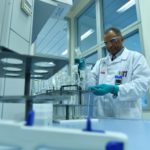News, BU, Harvard create new model to better understand wound healing
Boston University’s Biological Design Center and Department of Biomedical Engineering and Harvard University’s The Wyss Institute for Biologically Inspired Engineering collaborate to create a model to understand the human wound healing process better. They used an in-vitro model with human cells to replicating the wound closing process and how tissue forms to close the wound. This is significant for future research on disease and drug development. Through their model, they were able to have a controlled environment to study tissue formation. Their ultimate goal is to create better models to capture human disease and human physiology, according to Professor Jeroen, who is the main researcher for this project.
Learn about our two Decals!
 Click here to find out more about our Fall Bioinspired Design Decal and our Spring Bioinspired Design in Action Decal – ALL MAJORS are welcome.
Click here to find out more about our Fall Bioinspired Design Decal and our Spring Bioinspired Design in Action Decal – ALL MAJORS are welcome.Berkeley BioDesign Community
 Click here to learn about the BioD: Bio-Inspired Design @ Berkeley student organization or here to signup for more info.
Click here to learn about the BioD: Bio-Inspired Design @ Berkeley student organization or here to signup for more info.Search
Student Login




I imagine that the neurological circuits underlying these processes are governed by both 2d spacing maps with their brains as…
to reduce the impact of car accidents, it may be possible to study the force diverting physics of cockroaches to…
you see this type of head-bobbing stability in many avian creatures related to pigeons like chickens. the head ability to…
not like they taught horses how to run! this is an example of convergent evolution where both sea creatures and…
The brain functions in a similar way with neuronal connections. our brains are able to utilize the multiplicity of connections…